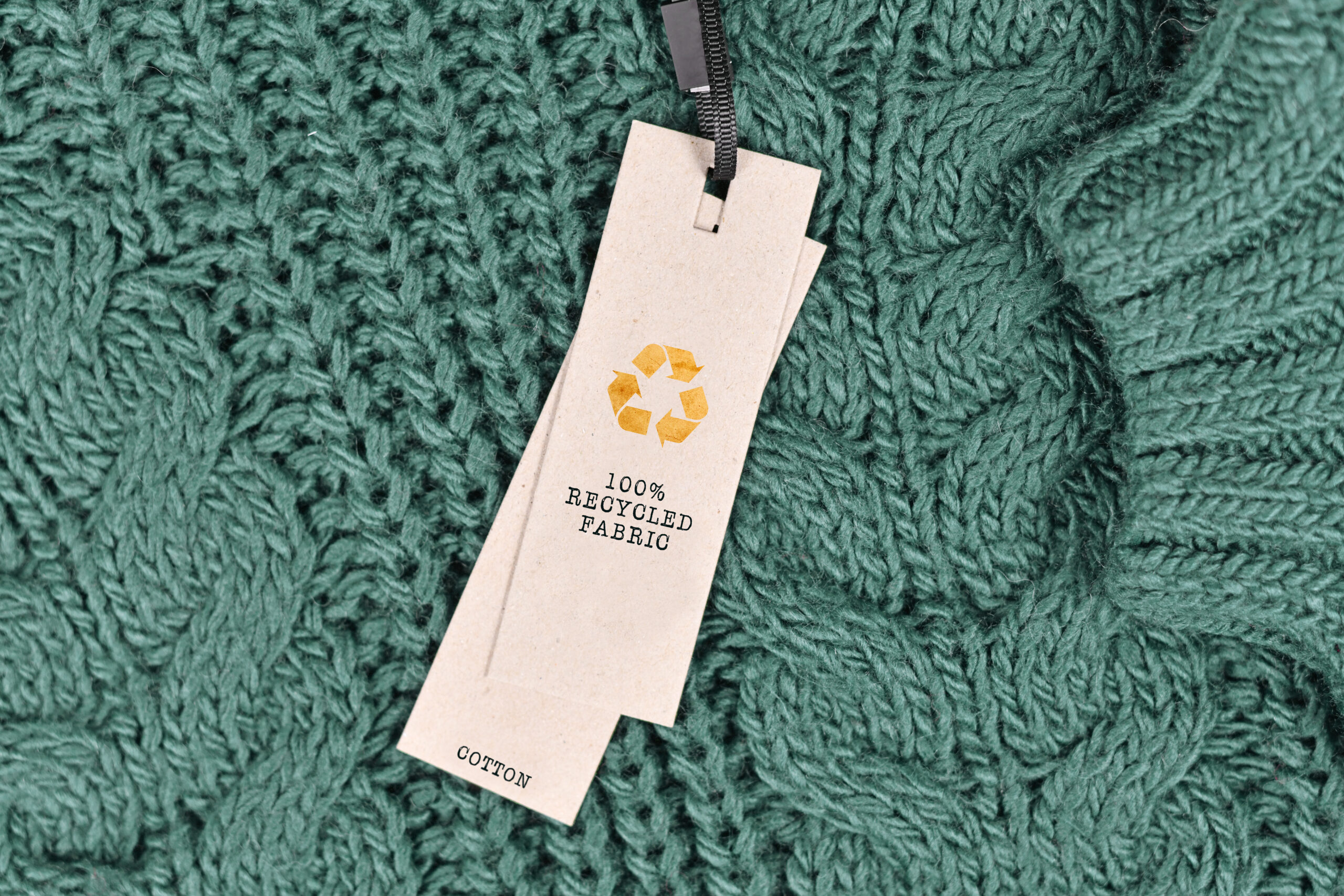The Foreseeable Future of Cape Town Sustainable Fashion in the Global Market
The Foreseeable Future of Cape Town Sustainable Fashion in the Global Market
Blog Article
Remain Ahead of the Curve by Checking Out Cutting-edge Style Fads
In a sector as vibrant as fashion, remaining ahead entails greater than simply adhering to existing trends-- it requires an expedition of development. Smart fabrics, for example, are changing garments into practical work of arts, while 3D printing is revolutionizing design processes with its adjustable, waste-reducing capacities. As sustainability ends up being a cornerstone, developments like environmentally friendly products and round style techniques are reshaping environmental responsibility - Cape Town Sustainable Fashion. In addition, the merging of technology and fashion advertises a brand-new era of consumer involvement. Exactly how, after that, can these emerging trends redefine the future of style, and what effects do they hold for brand names seeking to thrive in this progressing landscape?

Embracing Smart Textiles
In recent times, the garment industry has seen a transformative shift with the combination of wise textiles, a cutting-edge innovation that mixes innovation with fabric. This advancement represents not just a combination of appearances and capability however additionally a considerable jump in the direction of sustainability and personalization in style. Smart fabrics, additionally referred to as e-textiles, embed sophisticated electronic devices such as sensing units and conductive threads within the fabric, allowing garments to engage with the wearer or the setting.
These textiles are made to keep an eye on physical specifications, such as heart rate or body temperature, supplying real-time health and wellness analytics. Beyond health applications, smart textiles are additionally being utilized for flexible clothing, which can alter shade or pattern in reaction to ecological stimuli, hence offering a vibrant style experience.
Additionally, the advancement of energy-harvesting textiles that generate power from movement or sunshine is leading the way for self-dependent wearable innovation. This development is attracting environmentally conscious customers and developers intending to minimize the eco-friendly impact of fashion. As r & d in this area advancement, clever fabrics are anticipated to end up being increasingly common, reshaping the landscape of contemporary style with their multifunctional capacities.
The Surge of 3D Printing
Revolutionizing the manufacturing landscape, 3D printing has become a game-changer in the fashion business. This advanced innovation has actually enabled developers to press the boundaries of creativity, creating complex and customized garments that were previously unbelievable. By leveraging electronic design and additive production, 3D printing facilitates the creation of complicated geometries and patterns, allowing designers to try out new appearances and structures.
A notable benefit of 3D printing in fashion is its capability to produce on-demand, reducing waste and decreasing inventory requirements. This effectiveness not only optimizes production procedures however also permits fast prototyping, allowing designers to bring their visions to life in a much shorter duration. Moreover, 3D printing supports modification to a level unmatched by typical approaches, using one-of-a-kind designs and tailored fits tailored to private consumer preferences.
The surge of 3D printing has also democratized style, making it accessible to arising designers who can now make top quality items without substantial financial investment in conventional production infrastructure. As technology remains to development, the style industry is positioned to harness the full possibility of 3D printing, checking out new materials and methods that will undoubtedly redefine how fashion is conceived click site and generated.
Sustainable Fashion Technologies
As the fashion business comes to grips with journalism need for environmental responsibility, sustainable fashion developments have emerged at the forefront of transformative adjustment. The growing awareness of eco-friendly influence has sustained a shift towards even more eco-conscious practices and products. Brands and developers are currently focusing on sustainability, integrating methods that decrease waste and decrease carbon footprints.
One considerable growth is the increase of round style, which emphasizes recycling and upcycling to expand the lifecycle of garments. This technique not only reduces waste yet likewise motivates customers to take on a more mindful method to clothes consumption. In addition, using lasting materials, such as natural cotton, hemp, and recycled polyester, has actually gained traction. These materials need less water and power throughout production, substantially lessening environmental effect.
An additional development depends on the adoption of innovative dyeing strategies that make use of waterless processes or all-natural dyes, thus minimizing the huge amounts of water and chemicals typically used in textile dyeing. Additionally, advancements in biotechnology have actually caused the creation of lab-grown leather and textiles, supplying cruelty-free and eco friendly alternatives to conventional products. Through these introducing initiatives, the fashion business is making purposeful strides towards a much more sustainable future.

Tech-Integrated Garments
Tech-integrated clothing stands for a cutting-edge blend of fashion and innovation, improving how individuals connect with their garments. This cutting-edge domain name is marked by the addition of wise textiles and embedded electronic elements, enhancing both functionality and aesthetic appeal. From health and fitness trackers embedded in sports apparel to warmed coats managed via smartphone apps, tech-integrated garments read here supplies consumers unprecedented convenience and adaptability.
Introducing brand names are driving this pattern, concentrating on creating garments that respond to ecological stimuli or individual commands. For circumstances, some garments can alter color or pattern in reaction to temperature level shifts, while others incorporate biometric sensing units to check health metrics like heart rate or stress and anxiety levels. The smooth assimilation of technology right into fabrics also reaches environmental sustainability, with efforts to establish self-cleaning textiles or garments that adjust to weather problems, hence lessening the need for multiple layers.
Furthermore, the advent of wearable technology is not simply restricted to apparel however reaches devices like watches and eyewear, further broadening the extent of tech-integrated fashion. As the industry remains to innovate, the capacity for modification and customization in apparel grows, providing consumers distinct, tech-enhanced style experiences that satisfy their individual requirements and choices.
Future of Virtual Style
In recent times, the future of virtual style has arised as a transformative pressure within the industry, leveraging developments in digital innovation to redefine exactly how style is created, experienced, and taken in. By integrating increased reality (AR), virtual reality (VIRTUAL REALITY), and 3D style tools, developers can now craft immersive and interactive experiences that transcend traditional style limits. Online fashion enables the development of garments that exist solely in electronic environments, supplying countless possibilities for development without the limitations of physical manufacturing.
This digital change not just offers possibilities for innovative expression but likewise addresses sustainability issues intrinsic in standard fashion techniques. Cape Town Sustainable Fashion. By getting rid of the need for physical resources, virtual style decreases waste and minimizes carbon footprints. In addition, the increase of digital fashion lines up with the boosting consumer demand for distinct and tailored experiences, as digital garments can be personalized and customized to private choices easily

Conclusion
The style market's future lies in the combination of ingenious technologies and sustainable methods. Digital style is positioned to redefine customer communications.
In recent years, the visit site fashion market has witnessed a transformative shift with the integration of wise fabrics, an advanced innovation that mixes innovation with textile.As the fashion market grapples with the pressing requirement for ecological obligation, lasting style advancements have actually emerged at the forefront of transformative adjustment.In current years, the future of online fashion has actually emerged as a transformative pressure within the industry, leveraging improvements in digital modern technology to redefine exactly how style is produced, experienced, and eaten. The rise of digital fashion aligns with the increasing customer need for distinct and tailored experiences, as virtual garments can be personalized and tailored to specific preferences with convenience.
The style industry's future lies in the combination of sustainable practices and innovative technologies.
Report this page